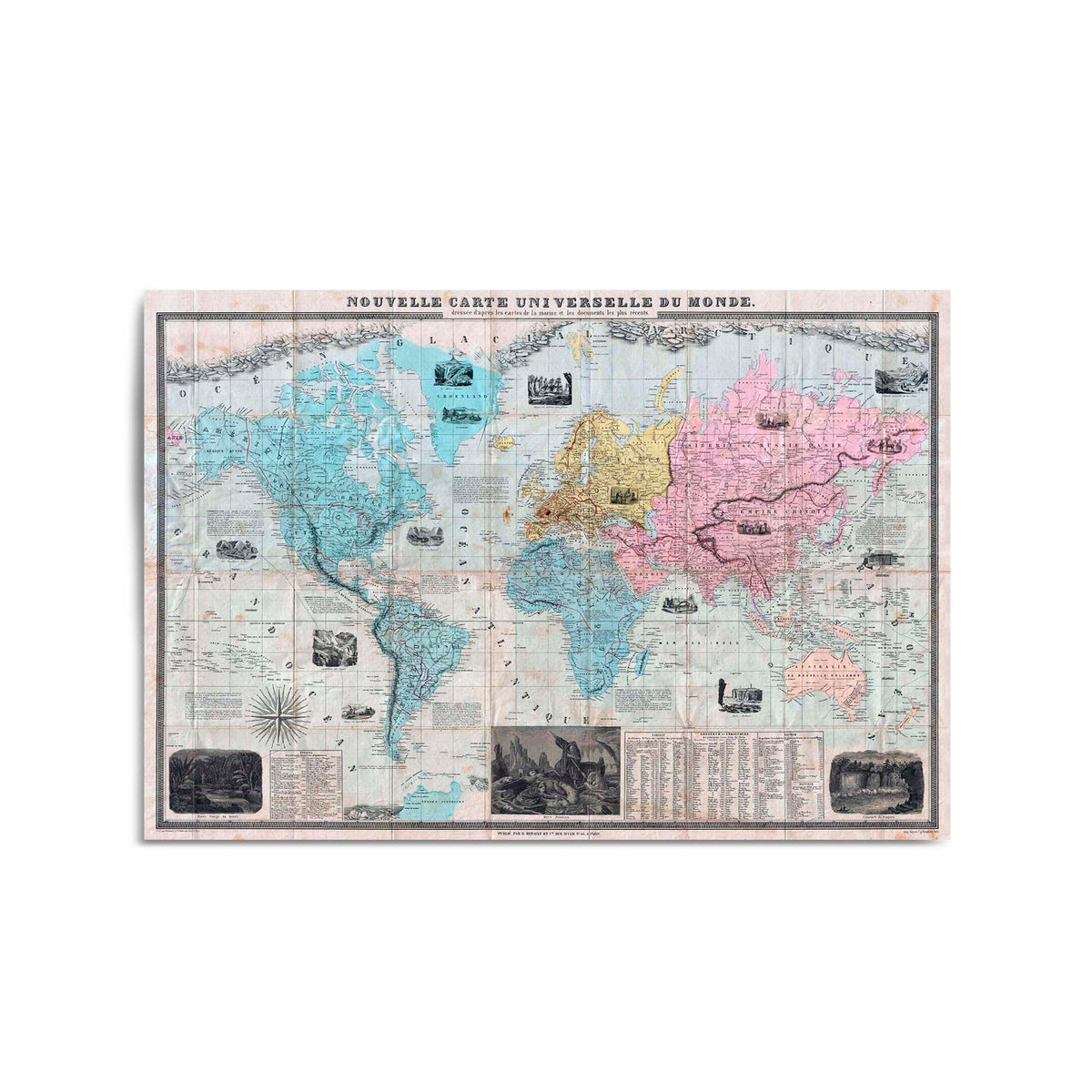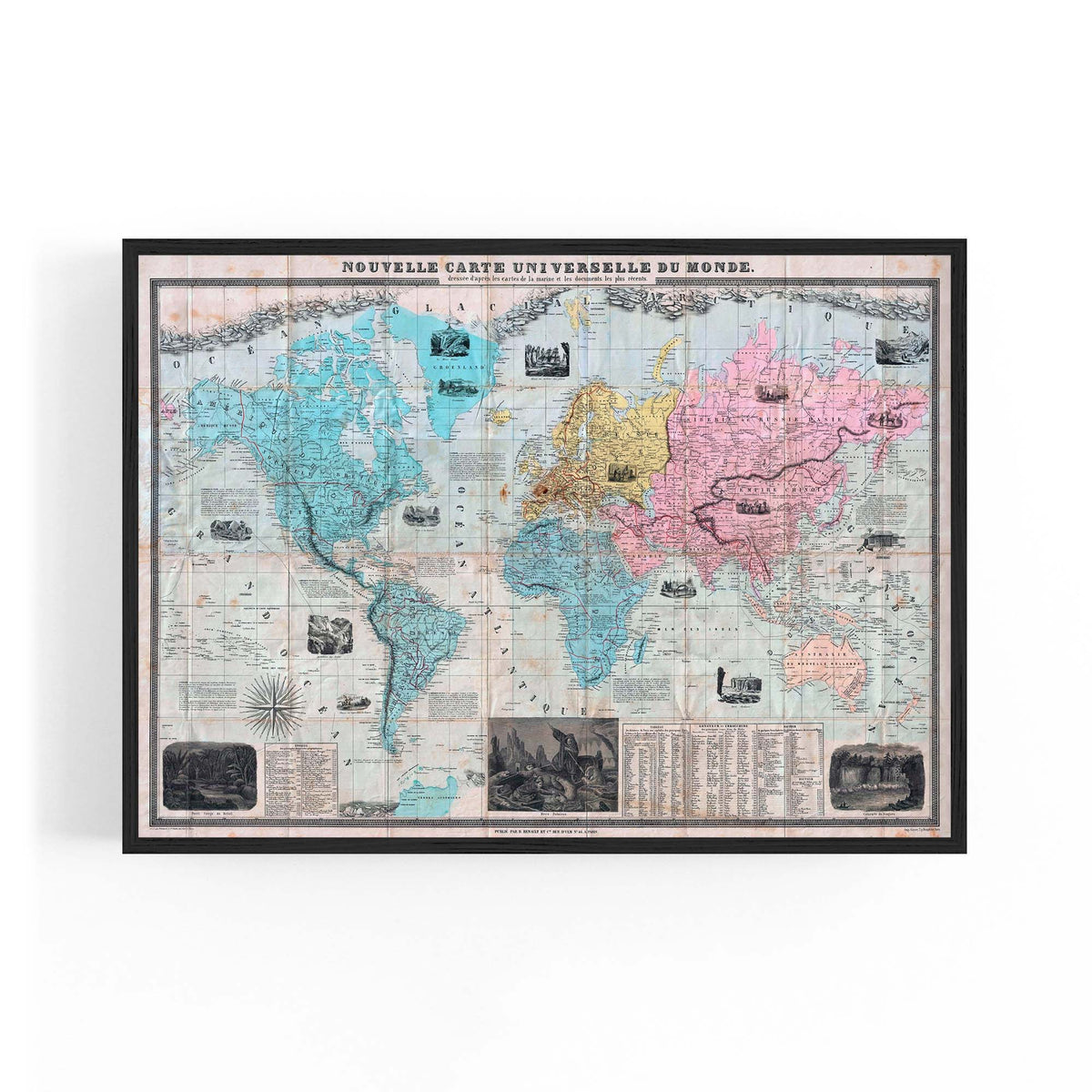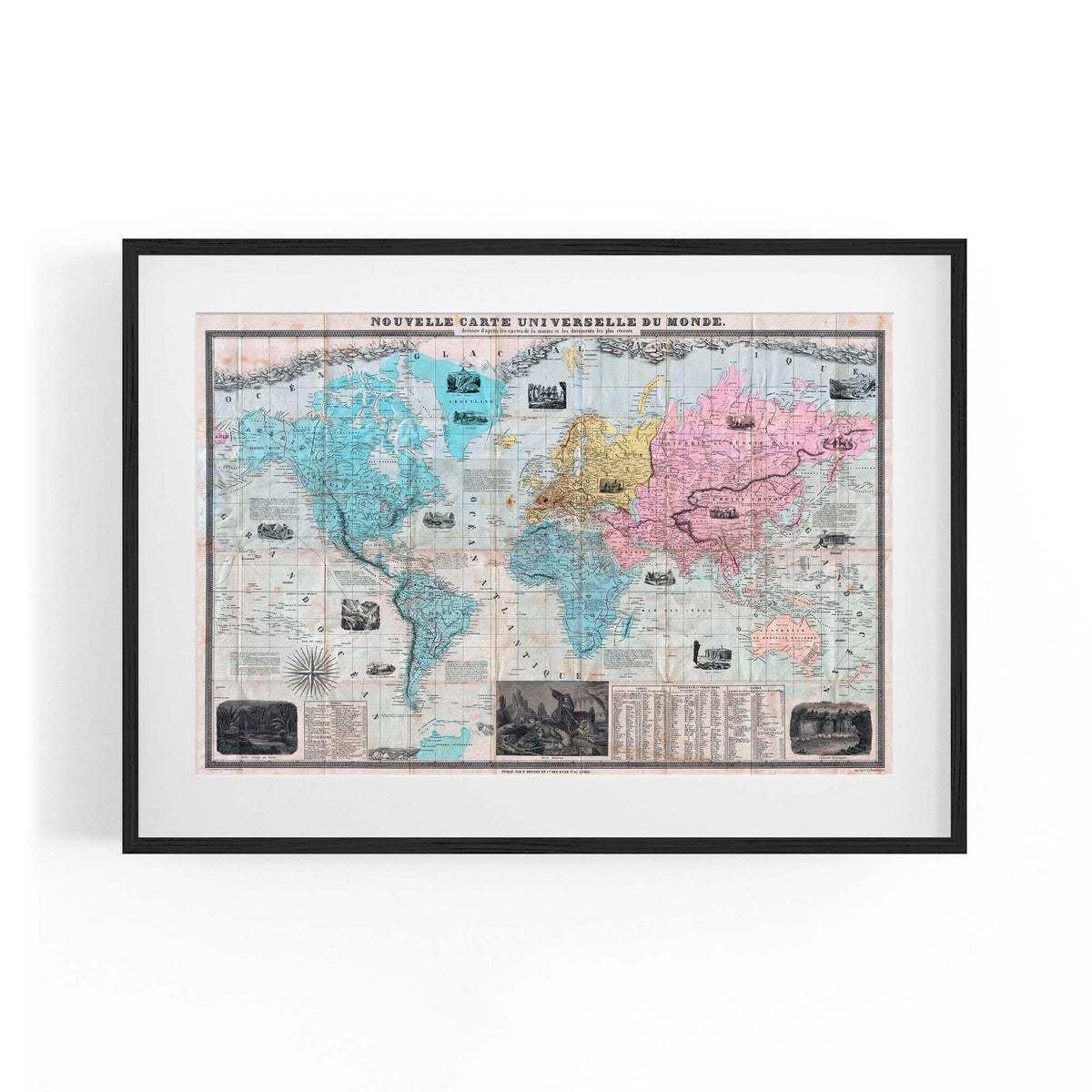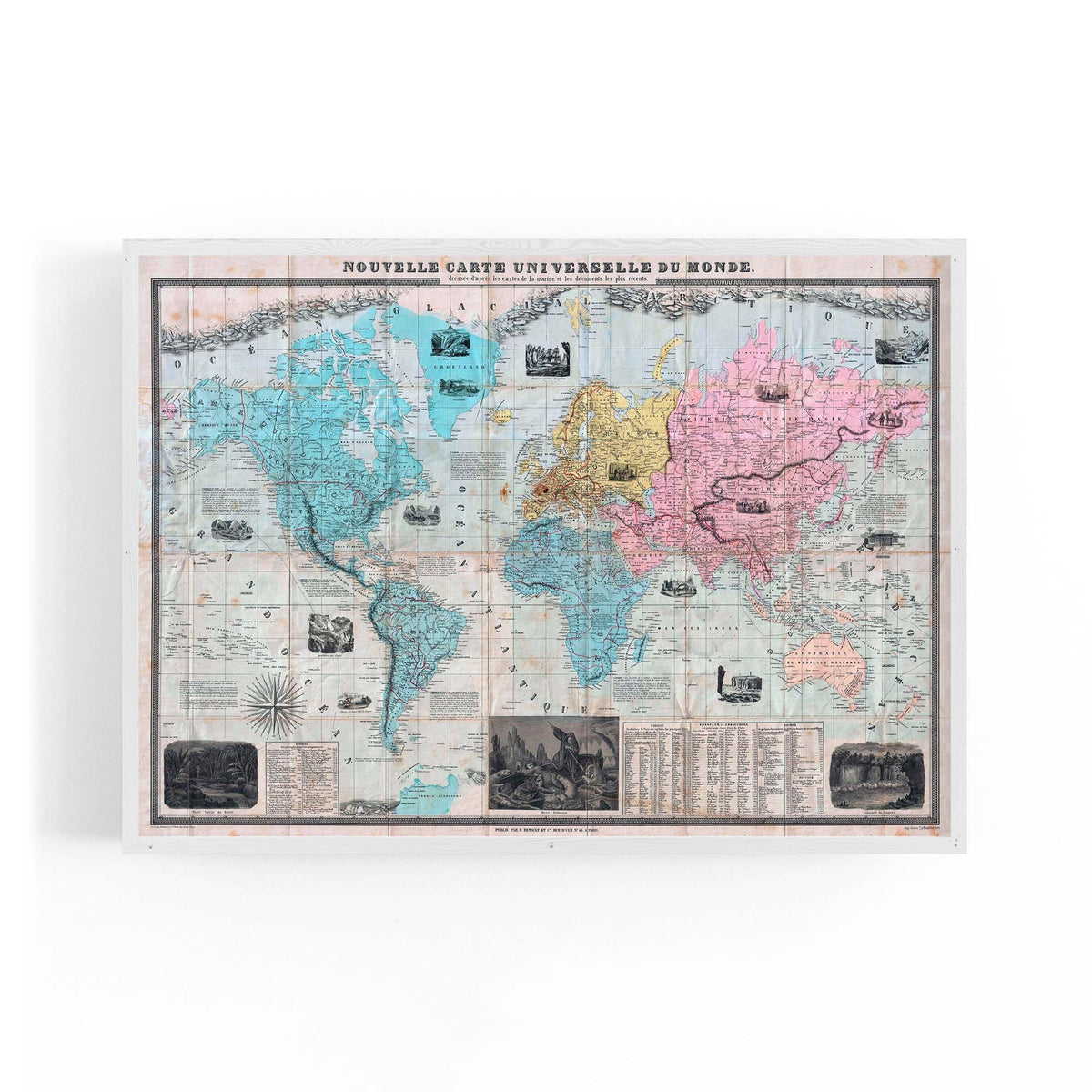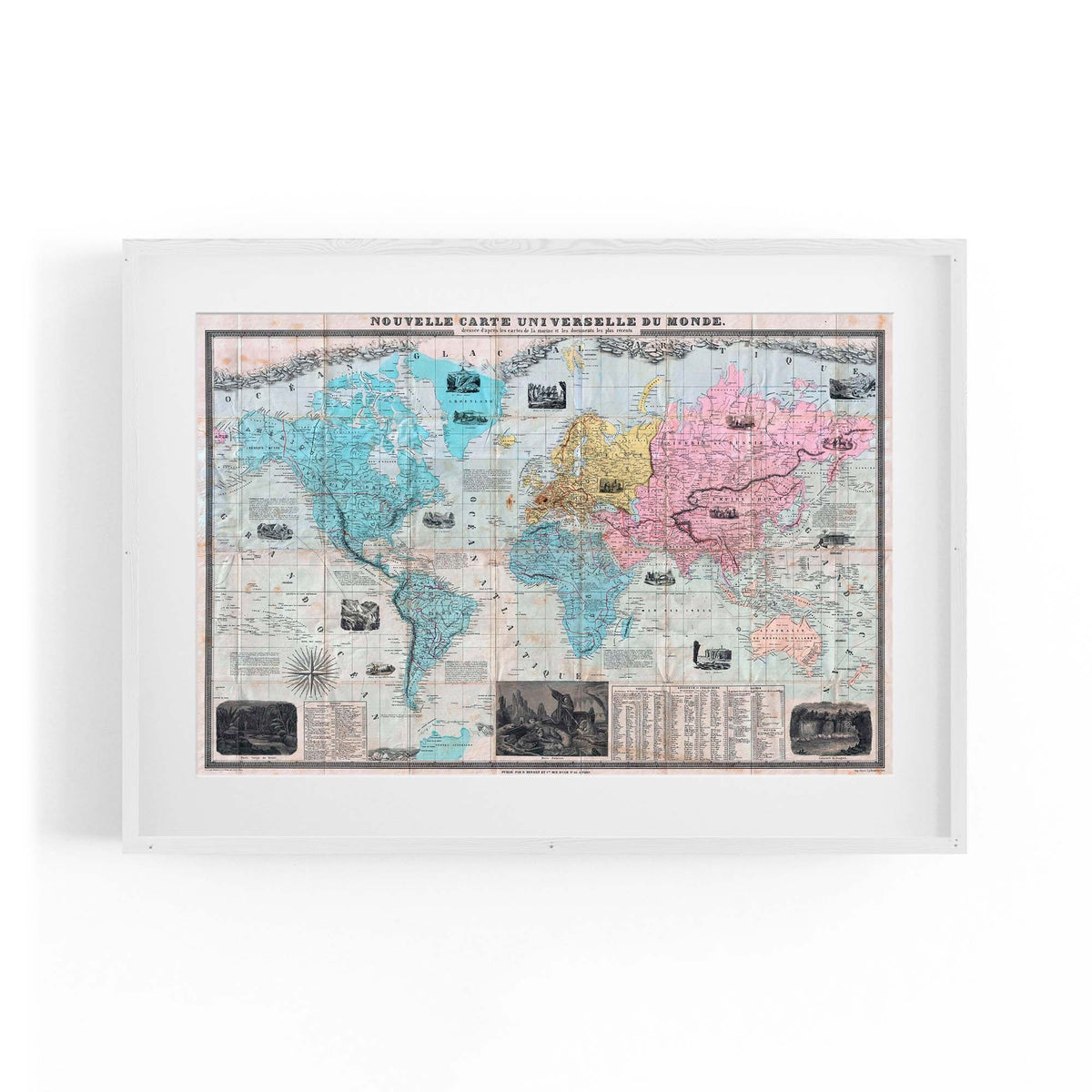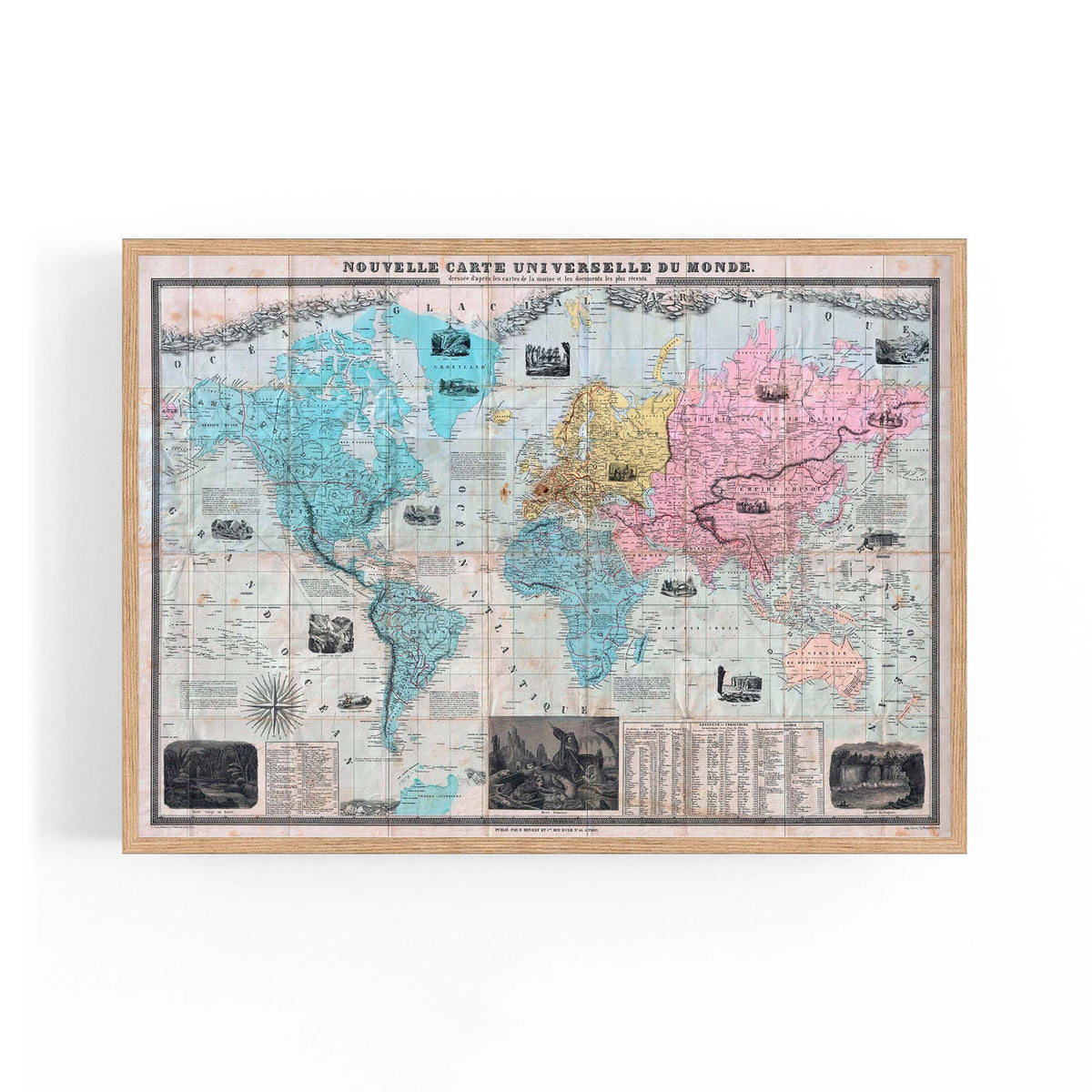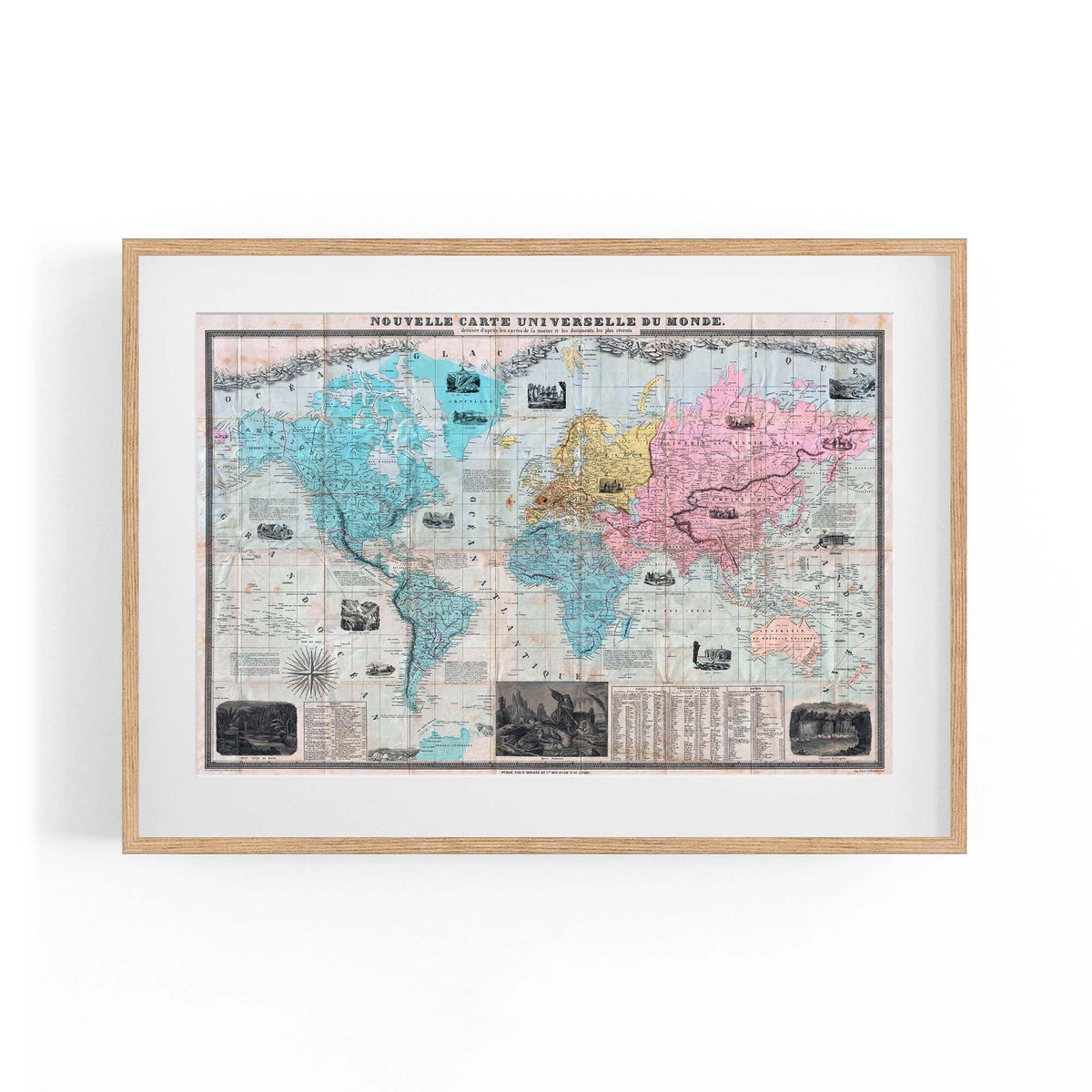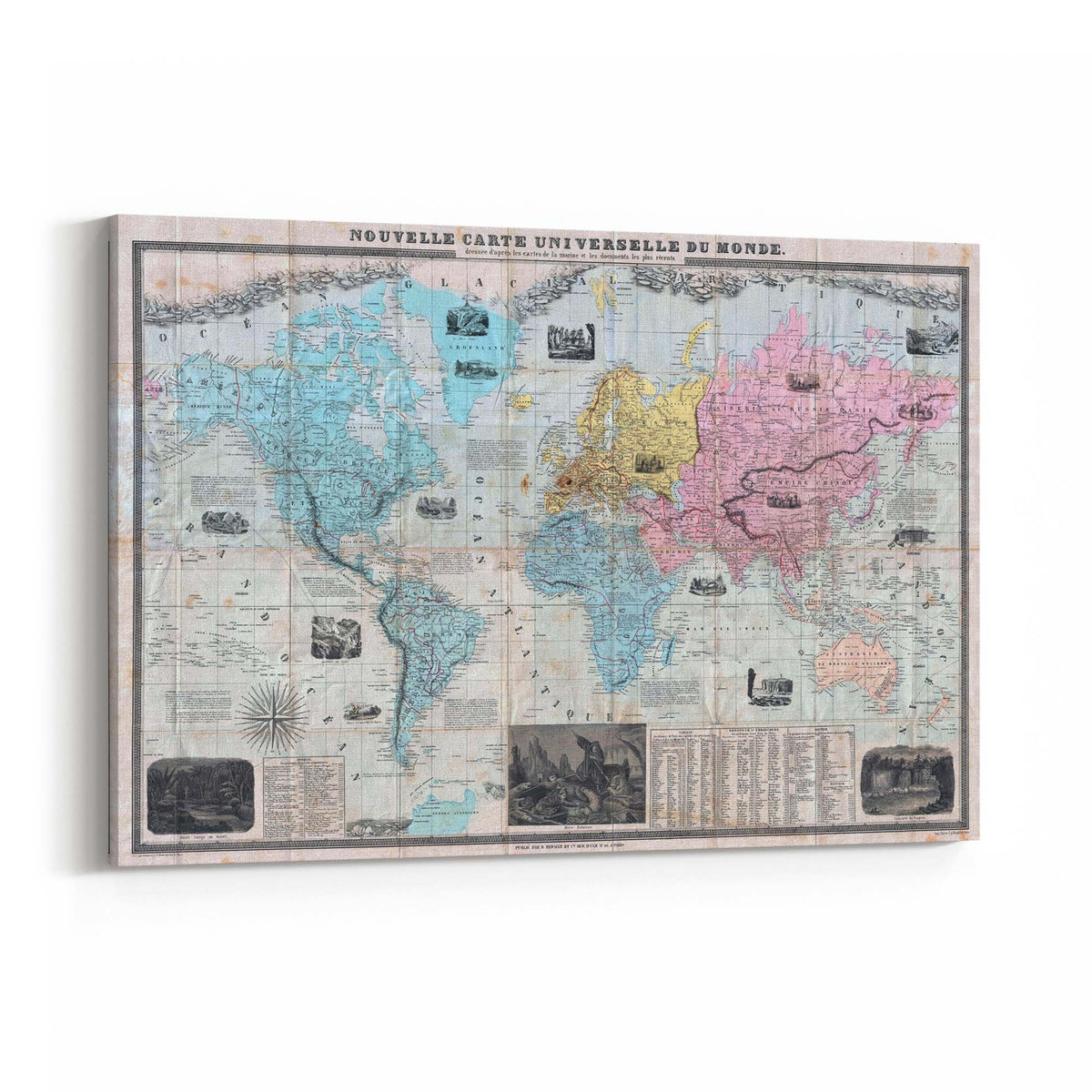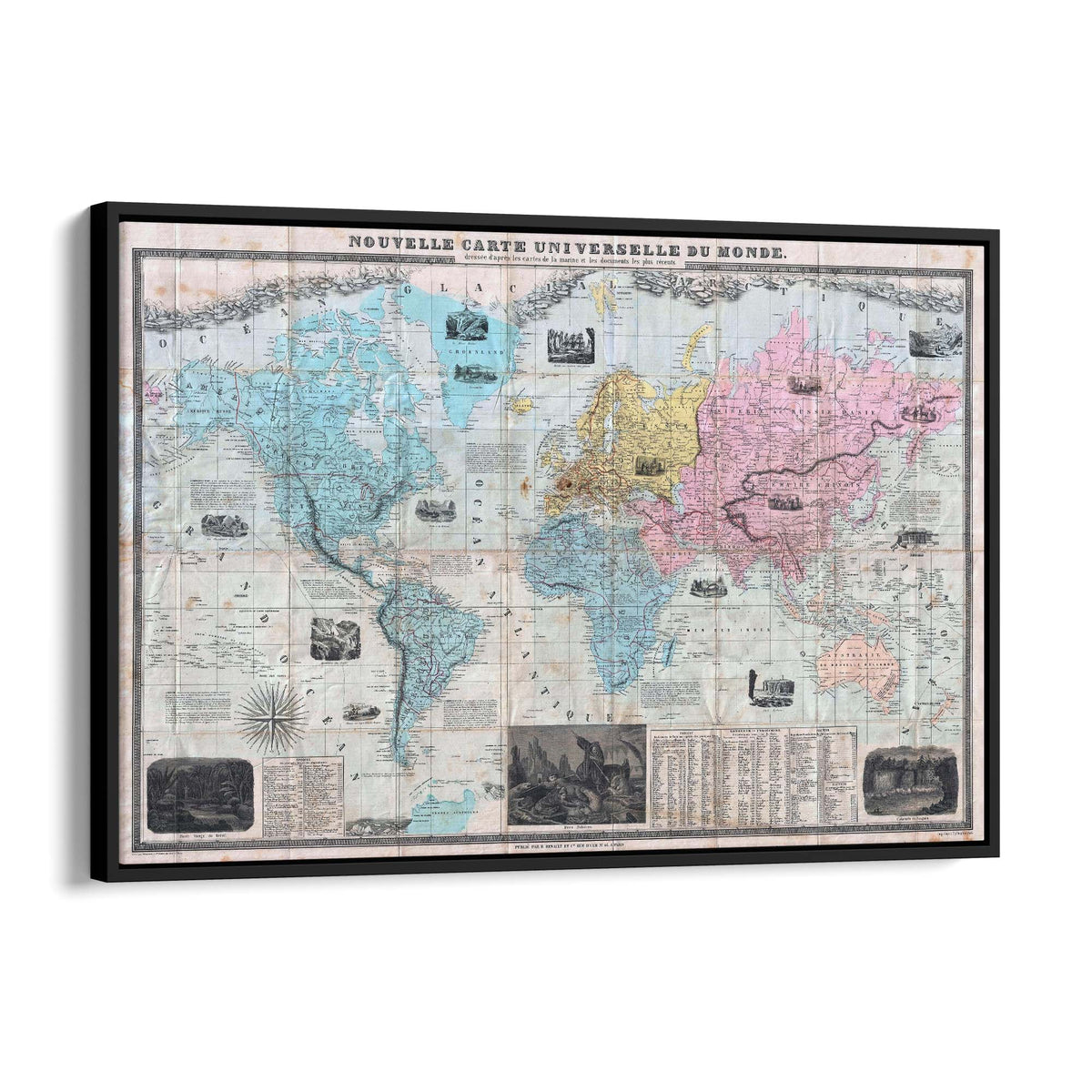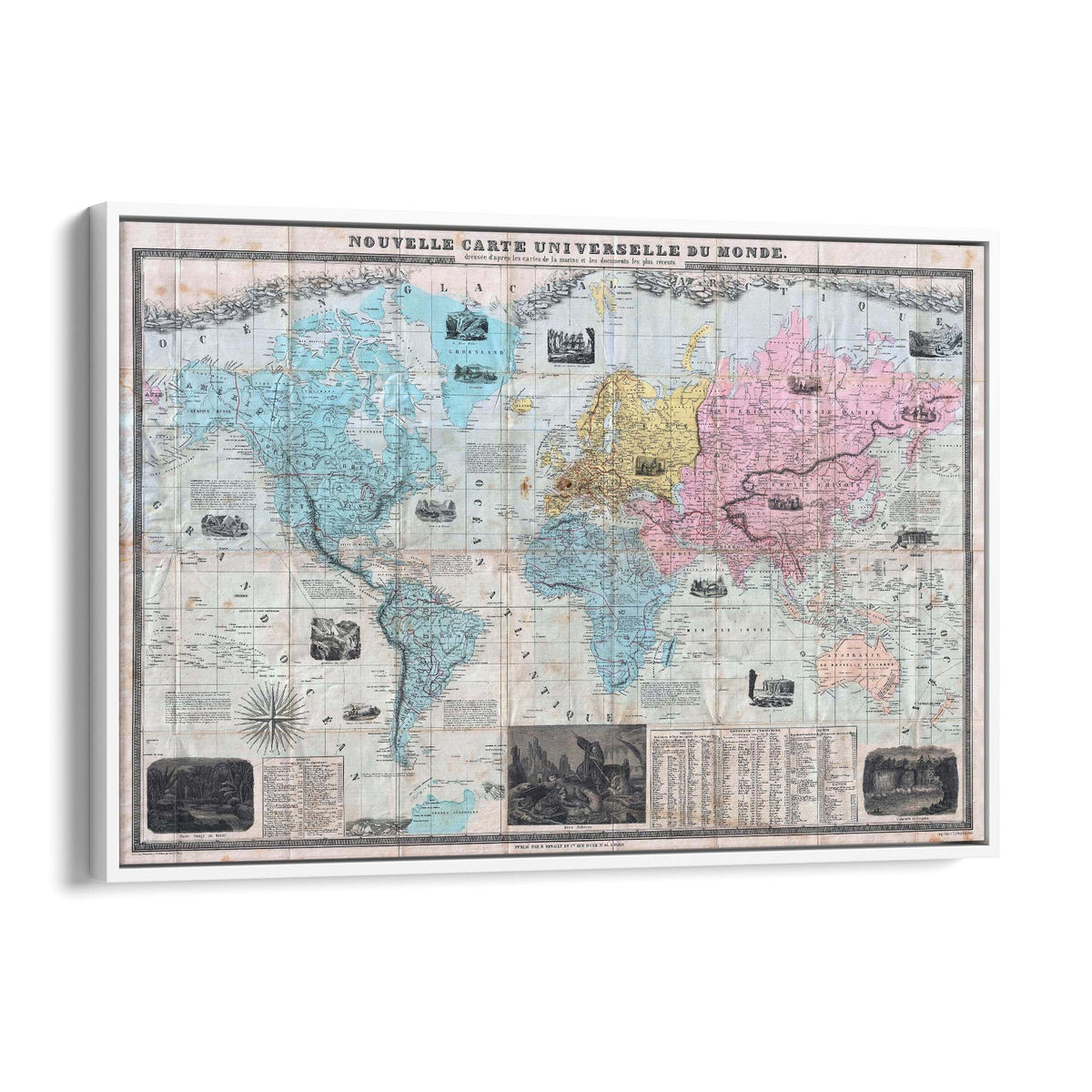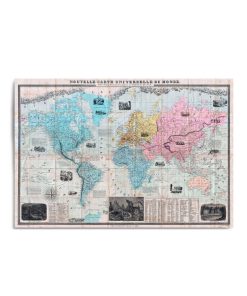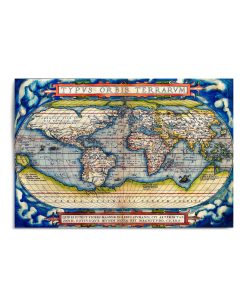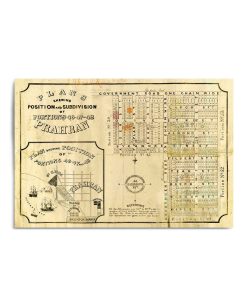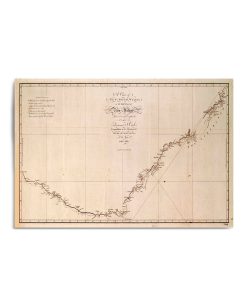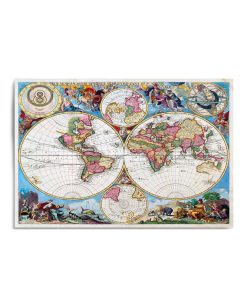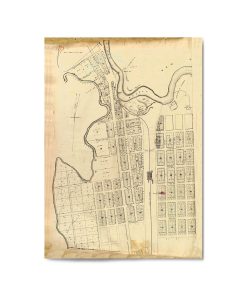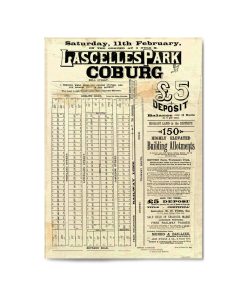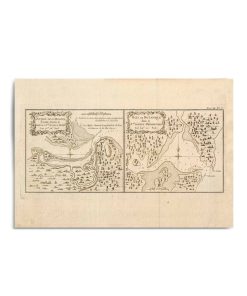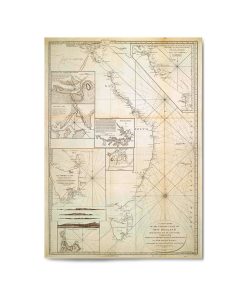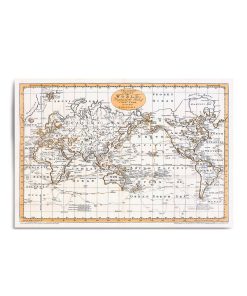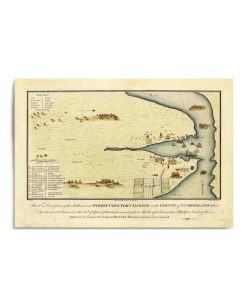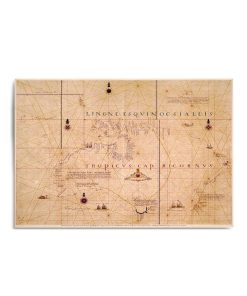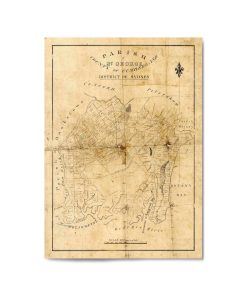1859 Vintage Map of The World VintageMaps.au
$ 45,00 $ 27,00
Zoom In For Detailed Preview:
A fine example of Felix Delamarche’s 1859 case map of the World.
Drawn on a monumental scale, this incredible map covers the known world, from the Arctic Icecap to the just-discovered Terres Australes (Antarctica). The map purports to be based on nautical charts and the most recent marine documents available. Cartographically it reflects some of the most recent discoveries, particularly in the Arctic and Antarctic – for which the 19th-century world had a particular fascination.
In addition to the standard cartographic elements, Delamarche has added a host of additional information including cultural notes on the peoples and places depicted and no less than seventeen illustrative vignettes. Some of these include prospectors panning gold in California, a large illustration of arctic explorers besieged by angry polar bears, the Great Wall of China, the Falls of Niagara, a Micronesian House, and the Amazon Rain Forest, among others.
Tabular data at the base of the map showcases the distances of the world’s capitals from Paris, the lengths of the world’s great rivers, the heights of mountains, and a timetable of discovery. Engraved by Felix Delamarche of 45 Rue St. Andre des Arts, Paris for B. Renault and Company, 46 Rue D’Ulm, Pairs.
As a whole, this map is an exemplar of a mapping style developed in France during the mid-19th century. Though not properly recognized, this style is marked by a number of cartographic conventions. European, particularly French, map publishers of the period started to take advantage of the sophisticated lithographic techniques being developed at the time. Able to economically print highly detailed maps on a massive scale, French cartographers began illustrating their maps with numerous decorative views and other engravings. Though the inclusion of pictorial elements in maps was nothing new, the style is distinguished from earlier cartographic graphics by its intent. In the 18th century graphic elements tended to be either purely decorative or allegorical. By the early 19th century, through the influence of the comparatively minimalist English cartographic traditions of Cary, Pinkerton, and Thomson, graphic illustrations had all but vanished from maps. With the birth of the arm chair explorer in the mid-19th century, illustrative images once again began working their way into maps. These new illustrations, however, were pictorial and intended to illustrate natural wonders, foreign cultures, and exotic animals.
1859
| Frame Size | A3 (29.7 x 42cm), A2 (42 x 59.4cm), A1 (59.4 x 84.1cm), B1 (70.7 x 100cm), A0 (84.1 x 118.9cm) |
|---|---|
| Format | Unframed Print, Black Frame + Paper Print, White Frame + Paper Print, Natural Timber Frame + Paper Print, Black Frame + Paper Print + Mat Board, White Frame + Paper Print + Mat Board, Natural Timber Frame + Paper Print + Mat Board, Stretched Canvas, Stretched Canvas + Black Floating Frame, Stretched Canvas + White Floating Frame, Stretched Canvas + Dark Oak Floating Frame |
Prompt Delivery and professional packaging
We provide a variety of shipping options thanks to our long-standing partnerships with UPS, FedEx and DHL. Our warehouse personnel are highly skilled and will pack your items according to our precise and exact specifications. Before shipment, all items are carefully examined and securely secured. We deliver to thousands of customers every day across different countries. This is a sign of our dedication to being the largest online retailer worldwide. The warehouses and centers of distribution are situated in Europe and the USA.
Note that orders containing more than one item will be subject to a processing period that is based to the specific item.
Before shipping, all ordered items will be thoroughly inspected. The majority of orders are shipped within 48 hrs. The delivery time should be between 3 and 7 working days.
Returns
Due to multiple entities, including the factory and the warehouse, we cannot completely manage our stock. The actual stock can fluctuate at any time. It is possible that inventory could run out once your order has been processed.
Our policy is valid for 30 days. If you don't receive your product within the 30 days period, we're not able to provide the option of a refund or exchange.
Your item must be in the original packaging and be unused. The item should be in its original packaging.
Related products
Uncategorized
Uncategorized
Uncategorized
Uncategorized
Uncategorized
Uncategorized
Uncategorized
Uncategorized
Uncategorized
1773 Map of Entrance to the Endeavour River, Queensland and Botany Bay, New South Wales Vintage Maps
Uncategorized
1800 Chart of the Eastern Coast of Australia from South Cape to Cape York Vintage Maps
Uncategorized
Uncategorized
Uncategorized
Uncategorized
Uncategorized
Uncategorized
1800’s Map of the Parish of St. George, County of Cumberland, New South Wales Vintage Maps
Uncategorized
